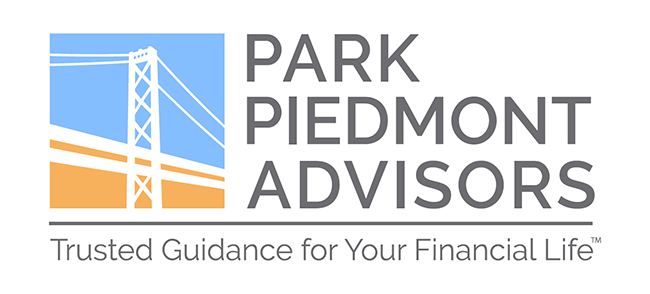We wrote recently about a Freakonomics book called Think Like a Freak. That book included many important pieces of advice related to the personal financial advice PPA provides our clients.
I just listened to a Freakonomics Radio podcast, “Here’s Why All Your Projects Are Always Late – and What to Do About It,” that has similar relevance to behavioral finance, a topic we discuss often.
The podcast addresses what the psychologists Amos Tversky and Daniel Kahneman (Nobel laureate and of Thinking, Slow and Fast fame) call the “planning fallacy.” This refers to people’s tendency to underestimate the time, and in most cases the costs, required to complete a project similar to one that’s been done before. Host Stephen Dubner referred to it as the “gap between intention and behavior.”
I expect this sounds familiar to you; it certainly does to me. Likely my worst example of falling victim to the planning fallacy is my stockpiling of old newspapers. (I don’t read the news online, and never will.) Although this may not seem like a typical project, I like to stay up-to-date, and generally find many topics interesting. So I keep papers for weeks, if not months or years. This has meant huge stacks in our garage, next to the exercise bike where I try to catch up. But there typically comes a reckoning when I realize I have to recycle at least some (but not all, since I’ll get to it someday, of course) of the mountain.

The podcast goes on to describe a few concepts related to the planning fallacy. One is “optimism bias,” which describes many people’s overconfidence that the next project will turn out just as they plan it, despite any cost or time over-runs experienced in the past. The optimism bias can have positive results, including encouraging people to start new projects in the first place. But it can also lead to excessive risk-taking and waste.
This is related to “strategic misrepresentation,” which describes the incentives we often have to understate project costs and time and overstate likely benefits. This is especially true when projects are awarded based on the lowest estimates of cost and time and/or the highest promised benefits. Without controls in place to identify “responsible” low bidders, these practices can lead to disasters for project sponsors. (For New Yorkers reading this, the nightmare project cited in the podcast is the Second Avenue subway, which started planning in 1968 and still isn’t finished 55 years and several billion dollars later.)

Two other behavioral issues impeding projects are “continuous partial attention” and “coordination neglect.” The first describes how we often fail to devote our full attention to projects, especially in this age of constant text/e-mail notifications and social media updates. One interviewee claims that it take 23 minutes (!) to fully recover attention after an interruption. The second issue refers to the difficulty of working together to make sure the various parts of a project are done correctly and in proper sequence. Coordination neglect can be especially problematic if different teams working on the same project are competing for resources, as they often do.
How to correct, or at least adjust, for the planning fallacy and related human behaviors? The podcast suggests “reference class forecasting.” This is a fancy term for the fairly simple concept of comparing plan (i.e., the new project) to actual (i.e., a comparable previous project). How did you do in terms of time, costs, and promised benefits on your most recent project? If it took 25% longer than proposed, reference class forecasting says to add 25% to the new estimate.

This is not an easy discipline, of course. It can be difficult to identify “comparable” previous projects. Strategic misrepresentation can mean that people who try to be honest about their new projects will lose out to those who aren’t (or maybe the latter simply hasn’t completed a comparable project before). But some jurisdictions, including the UK and Denmark according to the podcast, have built reference class forecasting into their process for approving large (i.e., multi-billion dollar) projects. They also include incentives in contracts that provide rewards if projects actually come in at or below time and budget, and punishments if they don’t.
What’s the relevance of all of this for personal finance? One obvious connection is budgeting. Since how much you spend has an enormous impact on how long your accumulated funds will last over your lifetime, PPA encourages clients to keep budgets and compare them to actuals at the end of the period.
The long-term planning illustrations we prepare for clients also have built-in reference class forecasting components. We show each year of a projection, which allows us to compare with annual actuals to see how that impacts the long-term trends. This allows us to work with clients to make any appropriate changes.
Finally, PPA’s quarterly reporting always compares actual results against a blended market benchmark that reflects each client’s actual asset allocation. Without this comparison, there’s no way to know whether you’re really doing well in good years (did the benchmark do better?) or poorly in bad years (maybe your result was less negative than the benchmark).
I highly recommend listening to the full podcast, and hope you’ll share with us some of your stories about dealing with the planning fallacy and how you have (or at least tried to) overcome it.








![Gambling versus Investing [illustration of a hand holding playing cards]](https://mcusercontent.com/a25f76db40a7a878779c776c0/images/988412f4-cfe0-c410-c317-f3f240c3d516.jpg)
![Sharing stories about the hidden curriculum of money [illustration of a group of people with speech bubbles over their heads]](https://mcusercontent.com/a25f76db40a7a878779c776c0/images/bd8f8d98-b1b0-caa6-4fff-c238f9456d7d.jpg)
![The Hidden Curriculum of Money [illustration of a detective following a trail of fading footprints]](https://mcusercontent.com/a25f76db40a7a878779c776c0/images/7f3adb5e-bac3-ef6f-0dbe-5c43b0c34a8d.jpg)
![The Future is Unknown [illustration of a box with question marks floating overtop]](https://mcusercontent.com/a25f76db40a7a878779c776c0/images/9af2b3a1-4139-b3d6-ab16-8216a3269a78.jpg)
![Financial Advisor [illustration of two women talking about money]](https://mcusercontent.com/a25f76db40a7a878779c776c0/images/12667526-aca8-8ed7-f23f-681038ea4c44.jpg)













